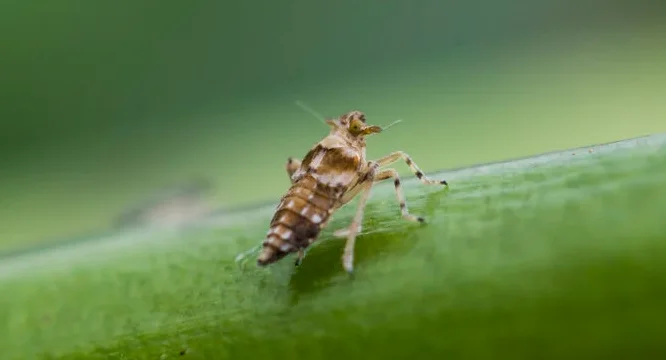
By Sheree Bega
Bite by bite, the army of tiny goggas that have been deliberately released at the polluted Hartbeespoort Dam to tackle the infestation of water hyacinth are winning the battle.
By 6 April, the water hyacinth planthoppers, Megamelus scutellaris, had whittled down the cover of the invasive superweeds on Hartbeespoort Dam to 12.5% from more than 40% in February.
Julie Coetzee, the director of the nonprofit Centre for Biological Control (CBC) at Rhodes University, expects this figure to hover below 5% by month-end. “The plants have been decimated by the control agents and are dying, leaving open water in their wake.”
In December, the Mail & Guardian reported on the CBC’s biological control of water hyacinth — named the world’s worst aquatic weed — using the water hyacinth hopper, a programme that’s been running since 2018.
Biological control relies on the safe use of natural enemies of the invasive species to feed on and reduce the populations of the species. The biocontrol agents are tested under strict quarantine measures to ensure they are host-specific and will not pose a threat to indigenous species.
Coetzee said that in December, the cover of water hyacinth on the dam was about 30% — 550 hectares — and the plants appeared healthy and green.
“The inundative biological control programme initiated by the CBC and supported by stakeholders around the dam was well underway then with the release of thousands of the water hyacinth hopper,” she said.
The hoppers were released from the CBC’s Waainek mass-rearing facility at Rhodes University in Makhanda and from rearing stations established at three sites with community partners around Hartbeespoort Dam.
December and January were much cooler and more rain fell in this time than over the past two December periods, “so the build-up of the control agents was slower than in the past”.
By the start of February, the water hyacinth had increased in cover to just over 40% of Hartbeespoort Dam.
“But the populations of control agents responded and started to explode in February, reducing the quality of the water hyacinth. This resulted in the control agents absconding en masse, in search of healthier water hyacinth elsewhere.”
As a result, Coetzee said, residents experienced large numbers of Megamelus scutellaris attracted to their lights at night.
“Some understood the process, but we did receive a lot of complaints about ‘our goggas’ invading people’s homes. It took a bit of convincing that this was a temporary phenomenon, and that it would have beneficial long-term results with the decline in water hyacinth. And that is what we are now observing.”
There have been numerous questions and statements about what happens to the water hyacinth, she said. “In contrast to a herbicide application, where the mat of water hyacinth dies rapidly and sinks, releasing nutrients that result in algal blooms, the action of biocontrol agents is much slower.
“The death of the plants takes a long time and is distributed over the dam as the plants move with wind and wave action,” she said. “There isn’t a sudden release of nutrients so the associated algal blooms don’t occur. We predict that by the end of the month, the cover of water hyacinth will be below 5%.”
Each water hyacinth flower produces thousands of seeds, which remain viable in the sediment for up to 25 years. Coetzee said the CBC expects the water hyacinth to germinate in spring this year because there is a large seed bank in the dam sediment after years of flowering.
Tackling water hyacinth is the symptom of a much larger problem — the eutrophication, or nutrient enrichment, of the water body, largely because of poor wastewater treatment in highly populated metropolitans. “While the [Hartbeespoort] dam remains polluted, water hyacinth and other invasive species will invade.”
More troops are on the way. “Our aim is to increase the number of rearing stations around the dam, through additional community partnerships, where we will mass rear the hopper over winter so that we can release them in their thousands when the water hyacinth plants start to grow again, reducing the potential for another water hyacinth explosion on the dam.”
The CBC, which consults and provides insects for free, received R22-million from the department of forestry, fisheries and the environment from 2018 to 2022. But it still has not received funding that should have arrived in April last year for the next cycle and remains reliant on private donations.
“We still haven’t had our tender adjudicated, so sit without [department] funding unfortunately,” Coetzee said, quipping: “At least the insects don’t need to be paid.”
Original article: https://mg.co.za/environment/2022-04-13-insect-army-winning-fight-against-invasive-water-hyacinth/
